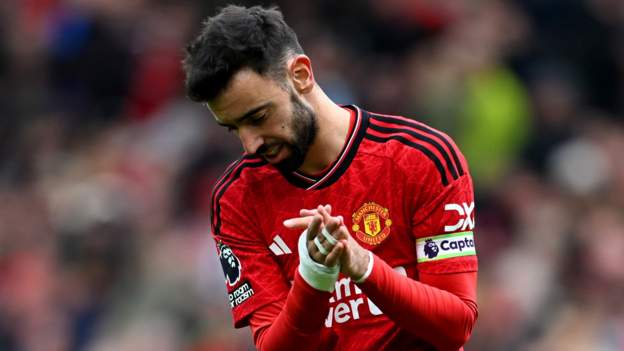Fourteen seconds. That’s how close the Detroit Pistons were to a championship in Game 6 of the 1988 NBA finals. Leading by one point over the defending champion Los Angeles Lakers, Detroit had possession. Then momentum shifted: A referee made a much-discussed foul call on the Pistons’ controversial center, Bill Laimbeer. The decision put Lakers star Kareem Abdul-Jabbar at the line; he made both free throws. LA went on to win, then prevailed in a similarly dramatic Game 7 for the title.
This is a pivotal moment from a new book by Rich Cohen called When the Game Was War: The NBA’s Greatest Season. The book argues that the excitement, excellence and revolutionary star play of the 1987-88 season set an unparalleled standard.
“One of the reasons I love that season,” Cohen says, “is that I think it had the most Hall of Famers who were not just Hall of Famers but at the top of Hall of Famers, the top 20 of all time, the greatest players of the era.”
The book focuses on the four top teams of that memorable season, and their respective leaders. The Showtime Lakers of Magic Johnson captured their second consecutive championship. Thomas’s Pistons fell just short, but went on to win the next two titles. The up-and-coming Chicago Bulls of Michael Jordan still had to wait for their incredible run of six championships in eight years during the following decade, while the Boston Celtics of Larry Bird saw their dynasty crumble, largely due to age and injury.
Appropriately, that season’s finals featured plenty of drama, including between Johnson and Thomas. Despite playing on rival teams, they were longtime friends, and before each game of the championship series, they kissed each other at center court. Then, according to the book, Lakers coach Pat Riley challenged Johnson to choose between his friend and his team.
“He made that choice,” Cohen says. “He laid out Isiah, knocked him down coming in the lane. It escalated from there.”
Both stars delivered clutch performances in the series. Despite a crushing ankle injury, Thomas nearly led the Pistons to a title. In Game 7, Johnson started a key sequence with a 360-degree spin move. Beyond the team leaders, there was plenty of talent on both squads. Although Johnson’s spin was a catalyst, it was his teammate James Worthy who eventually scored, while in the final seconds, AC Green closed things out with a layup.
As for the oldest player featured in the book, Cohen says, “Kareem Abdul-Jabbar, you can argue, was the No 1 player of all time – the top three or four, for sure.”
The book is written in an engaging style, occasionally referencing history and culture, even as it chronicles the hard-nosed, expletive-filled narrative on the court and in the locker room.
“It’s just the way that I experience the world,” Cohen says. “I always look for things that transcend the game.” Yet, he adds, he wrote the book out of admiration for “the game, the players”, an admiration that includes those who made unconventional choices in retirement. On that list is Detroit standout Adrian Dantley, who later became a school crossing guard.
As for Dantley’s teammate Dennis Rodman, the book notes his colorful post-Pistons career, from joining the Bulls dynasty to relationships with Madonna and Carmen Electra to visiting North Korea. “You probably know what happened to Dennis Rodman,” Cohen writes, “because it’s still happening.” He adds, “Of all the great players of his era, Dennis has lived the weirdest and most uniquely American life.”
In addition to the talent at the championship level, there were many other brilliant players in the league that season. Atlanta Hawks star Dominique Wilkins engaged in an epic playoff duel with the Celtics’ Bird. The Utah Jazz boasted the duo of Karl Malone and John Stockton at the onset of the historic partnership. Patrick Ewing, Clyde Drexler and Akeem (later Hakeem) Olajuwon were making impacts on the New York Knicks, Portland Trail Blazers and Houston Rockets, respectively.
“All were playing at the same time,” Cohen marvels. “There was an incredible variety of talent out there.”
As you might guess, the author is an NBA fan. Raised in the Chicago area, he and his siblings grew up playing basketball with their father as the hometown Bulls blossomed into a contender. In 1987-88, when Cohen was 19, the sensational Jordan averaged 35 points per game. Yet the era was about more than scoring: Cohen could also appreciate the defensive approach the Pistons used to shut down the Bulls star: the Jordan Rules.
Cohen explains that this unorthodox strategy meant letting Jordan score for the first three-plus quarters of a game. Late in the third quarter, the tactics would shift: When Jordan got the ball and approached the basket, Detroit would clobber him. According to the author, the benefits were multiple – Jordan might get angry and lose his composure, or he might pass to a teammate who was open but hadn’t shot much by that point.
“It was not only a strategy about Jordan but his teammates,” Cohen says.
Depth, by contrast, wasn’t a problem for Detroit. In addition to stars such as Thomas, Laimbeer, Dantley and Joe Dumars, the Pistons featured a strong supporting cast that included Rodman, Vinnie Johnson, Rick Mahorn and James “Buddha” Edwards.
“One of the things that made [the Pistons] so great – and why they’re not ranked as high as they should be – is that their strength was depth,” Cohen says. “I think they would be very proud to say that nobody on the team that won a championship the next year averaged more than 20 points a night. They spread it out.”
As the book explains, the Pistons were ideally positioned to wear down not only the Bulls, but also the Celtics. The rough play epitomized by Laimbeer was part of Detroit’s strategy for toppling Boston, the 1981, 1984 and 1986 NBA champions who were themselves a notoriously physical team.
Cohen paraphrases a quote from Sam Vincent, who played for both the Celtics and Bulls that season, on the Pistons’ plan: “We have to build an even nastier team than the Celtics, we have to out-bully the bullies.”
In general, Cohen reflects, “a team is built for a specific task – to beat another team.” The four teams profiled in the book “kind of produced each other”, he says, and that season, they were “all good at the same time”.
The book also chronicles a series of controversies relating to the players, including between Johnson and Thomas following Magic’s 1991 diagnosis of HIV. According to the book, the diagnosis ruptured their friendship – “word came back that Zeke had not called because Zeke believed that Magic was gay … Isiah denies this, but it doesn’t matter. This was the last nail.” The book also notes that some of its subjects had checkered personal lives, including the Celtics’ Robert Parish and Dennis Johnson, both of whom were accused of domestic abuse, with Johnson jailed for it. Thomas’ post-Pistons years also come in for scrutiny, such as his disastrous tenure as the Knicks’ head of basketball operations, during which he was accused of sexual harassment and the team paid over $11m in a settlement.
While Cohen acknowledges these controversies, he also writes that the action on the court that season provided him with a respite from the era’s geopolitical tensions – and with a level of basketball excellence he maintains is the best ever. Emphasizing that latter point is a memento on his desk: a brick from the long-destroyed Chicago Stadium, where Jordan made so many great plays. As Cohen puts it: “It conjures a time when the game was better than it had ever been, or will be.”

Christine Lake is a sports fanatic who lives and breathes athletics. With an extensive background in sports journalism, he covers everything from major league championships to grassroots sports events. When she’s not on the field or at the stadium, you’ll find Christine coaching youth sports teams.







